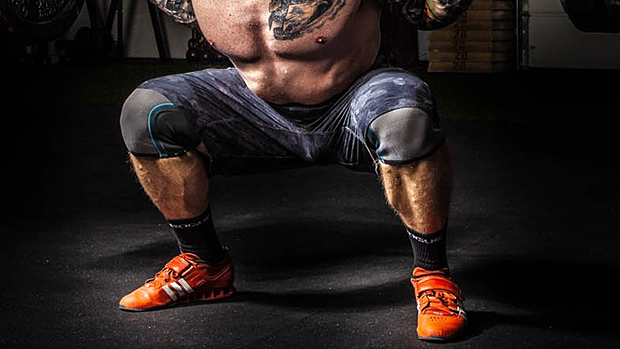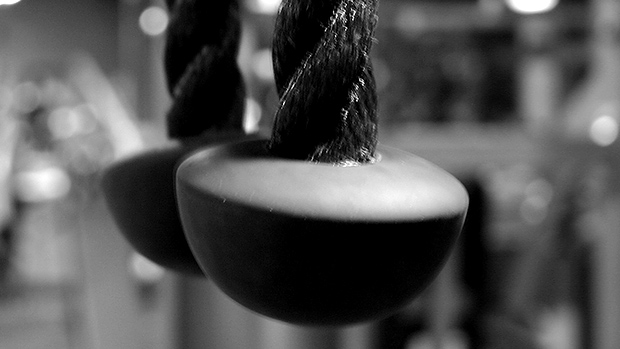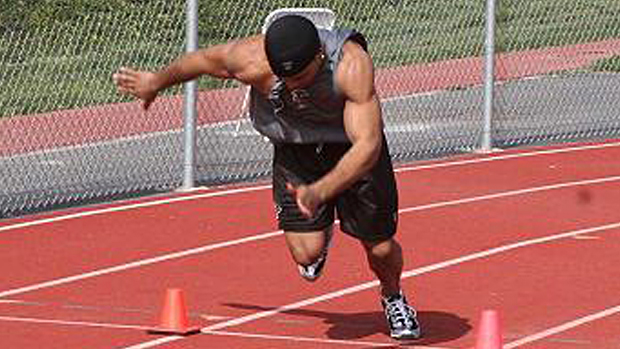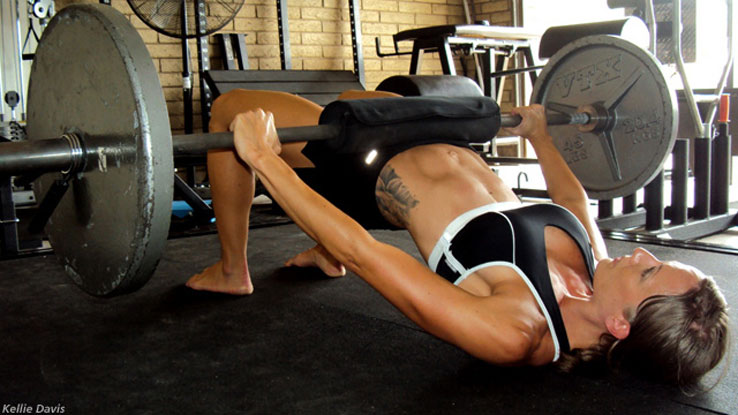Hip pain during squats is common. It's often described as a deep "pinching" sensation in the front of the hip at the bottom of the squat. Here are five tips to fix this nagging issue.
1 – Lose the Extra Wide Stance
As a physical therapist, when I come across someone who's suffering from hip pain during squats, one of the first things I do is adjust their form. Generally, hip pain is often seen in those who use an excessively wide stance. Oftentimes, the lifter doesn't possess adequate hip adductor mobility to do this safely, leading to a chain of events that predisposes the hip joint to a less-than-optimal position.
With an excessively wide stance, it's very difficult to keep the knees out in line with the foot, which requires optimal hip adductor length. Tight hip adductors with a wide stance will pull the knees in and place the hip in an internally rotated and flexed position – a position that doesn't tolerate heavy load very well.
If you use an excessively wide stance and are prone to hip pain, bringing it in just a tad can work wonders.
2 – Stop Stretching Your Hip Flexors
When people experience pain, the instinctive thing to do is stretch the painful area. Do your hips hurt doing squats? It must be tight hip flexors right? Wrong. Not only does this not make a shred of sense (the hip flexors are shortened at the bottom of the squat), it can actually exacerbate the issue.
Here's the truth. Painful structures don't like being stretched, period. Your painful hip may feel great for a few minutes after stretching, but it often comes back with a vengeance, tightening even more shortly after.
Instead of endlessly stretching your hip flexors without any long-lasting results, try activating your posterior chain more often with exercises like barbell hip thrusts. Activating the glutes is one of the best ways to reduce tightness in the front of the hip.
3 – Improve Hip Internal Rotation
When people feel a pinching sensation in the front of the hip, they often push the knees out further, bringing the hip into more abduction and external rotation. Bad idea. All this does is further mobilize into a region that's already sensitized and painful. Instead, you need to go the other way.
By moving into hip INTERNAL rotation, you're mobilizing the posteroinferior portion of the hip capsule, the exact portion needed for pain-free deep squatting. The bench hip internal mobilization is the go-to mobility drill for this.
4 – Improve Ankle Dorsiflexion
Limitations at the ankle have a direct impact on what happens at the hip. If you don't have sufficient ankle dorsiflexion, this pushes the knees and hips back further and forces the trunk to incline more than necessary.

Notice the increased forward lean and closed hip angle on the right due to limited ankle dorsiflexion. This combo leads to excessive hip flexion and forward torso lean, essentially closing off the hip joint. No wonder your hip pinches at the bottom of your squat! In order to fix this, try the banded ankle dorsiflexion mobilization.
5 – Practice 360 Degree Core Bracing
Another issue is improper core bracing. Sometimes coaches erroneously think that just "arching your low back" is an efficient core position for squatting. The truth is, this can directly correlate with hip pain.
When you arch your lower back too much, you also excessively anteriorly tilt your pelvis. This is another position that closes off the hip joint, leading to pinching. Instead of "just arching," make sure you keep a neutral pelvis, fire all the musculature around your midsection in a 360 degree manner to promote optimal pelvic alignment and a pain-free squat.




